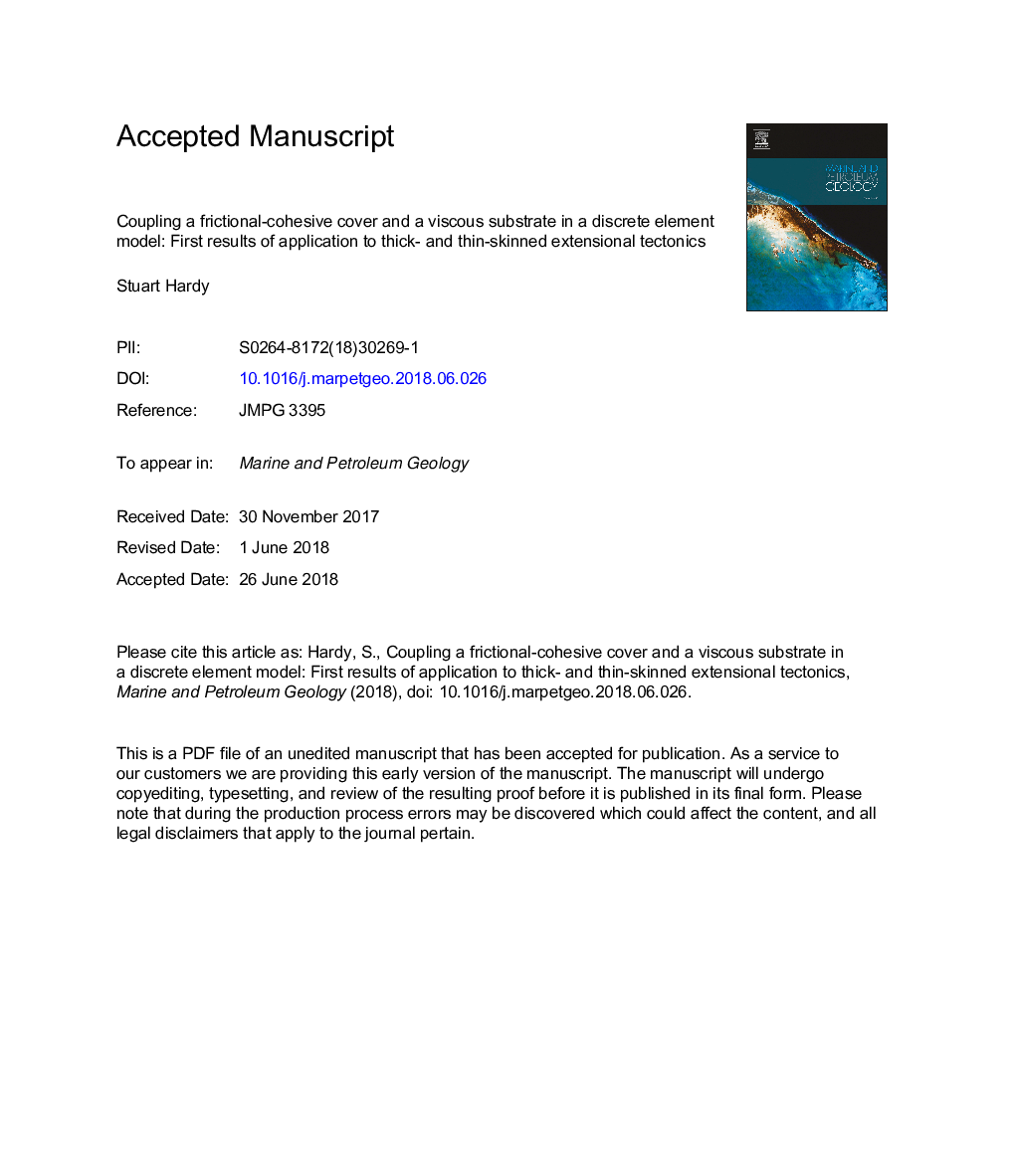| Article ID | Journal | Published Year | Pages | File Type |
|---|---|---|---|---|
| 8908944 | Marine and Petroleum Geology | 2018 | 25 Pages |
Abstract
Mechanical stratigraphy is now recognised as a fundamental control on the development of geological structures in the upper crust at a variety of different scales. This is perhaps never more apparent than when salt is part of the crustal section being deformed. The interaction of a ductile salt substratum and a brittle sedimentary cover is complex, but an understanding of it is essential both from an economic and academic standpoint. Here, I present first results of a discrete element model which combines a viscous (linear Newtonian) substrate and a frictional-cohesive cover. The modelling approach is firstly presented and experimental scaling to appropriate geological timescales discussed. The approach is then applied to 3 experiments simulating extensional deformation, two of which are thick-skinned and one is thin-skinned. Strain rates in all experiments are c. 1015 sâ1. The complex manner in which salt flows in the substrate and faults develop in the cover are illustrated and their linkage/evolution examined. Movement of the viscous substrate is the result of both Couette-type and Poiseuille-type flows and combinations thereof, whilst deformation in the cover takes the form of discrete, dilational faults which are not directly linked, or only soft-linked, to any sub-salt basement faults. Cover faults typically lose displacement towards, and tip out at, the cover-substrate interface. In addition, in models with a basement fault, the fault itself presents a growing and important no-slip boundary which significantly affects viscous flow. Implications for the timing/evolution of, and strain within, the resultant structures are discussed.
Related Topics
Physical Sciences and Engineering
Earth and Planetary Sciences
Economic Geology
Authors
Stuart Hardy,
